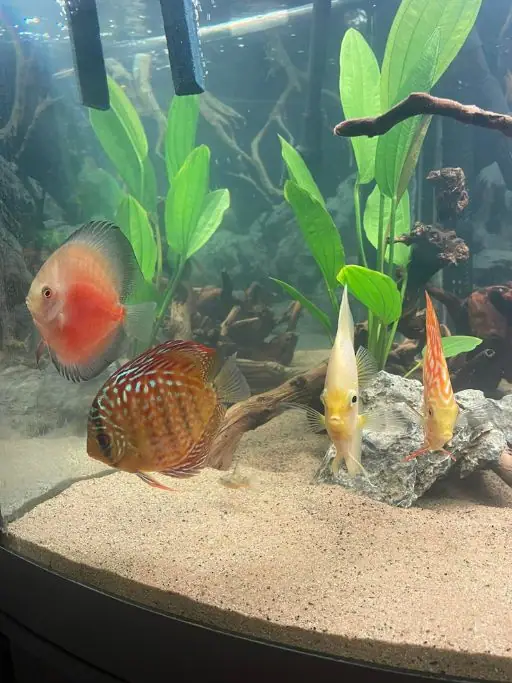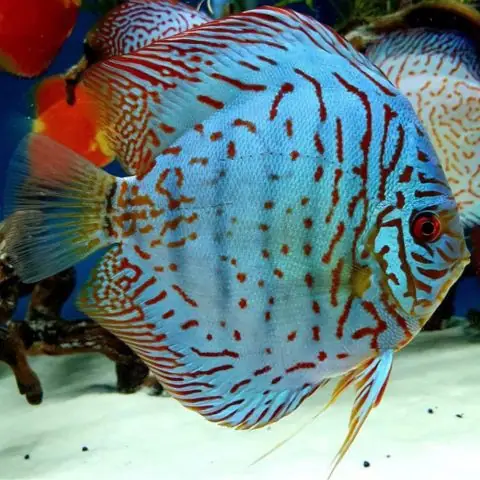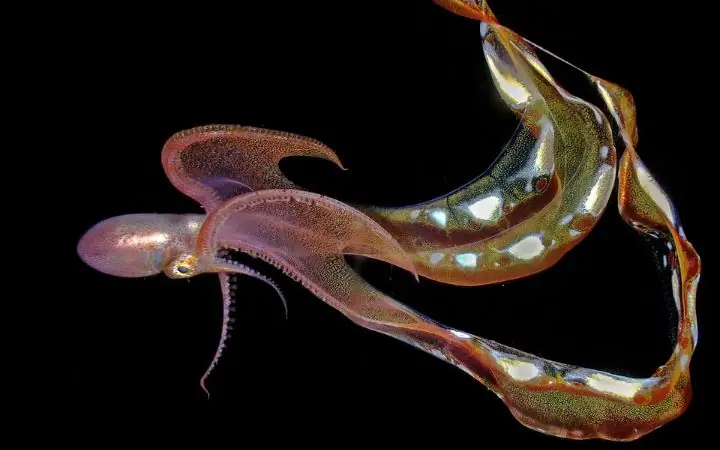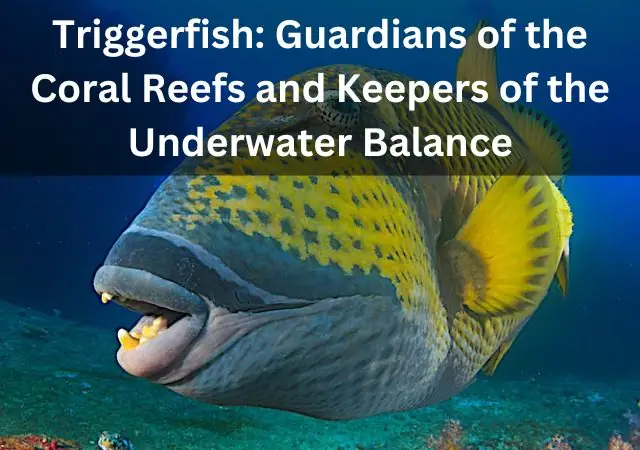Unveiling the Beauty of Discus Fish: A Comprehensive Guide

Discus fish, with their vibrant colors and graceful swimming patterns, has captivated the hearts of aquarium enthusiasts for decades. These magnificent creatures, known for their unique shape and intricate markings, bring a touch of elegance to any aquarium setting.
In this blog post, we will delve into the fascinating world of discus fish, exploring their captivating characteristics, their care requirements, and the joys and challenges of keeping these beautiful creatures in your own home.
Overview
Discus fish, scientifically known as Symphysodon, are a popular and highly prized species among aquarium enthusiasts. They are native to the Amazon River basin in South America, particularly in Brazil, Colombia, and Peru. Discus fish are known for their vibrant colors, unique body shape, and peaceful temperament.
When it comes to caring for discus fish, it’s crucial to create an environment that mimics their natural habitat. These sensitive creatures require precise water conditions, including specific temperature ranges, pH levels, and water hardness.
Additionally, the size of the discus tank, the filtration system, and the presence of plants and hiding spots all play a vital role in their overall well-being.
Here’s an overview of key aspects of discus fish:
Physical Appearance
Discus fish have a laterally compressed body shape, giving them a disc-like appearance, from which they derive their common name. They have round, flat bodies with a high dorsal fin and anal fin that extend to the caudal fin.
The discus fish’s most striking feature is its coloration. They display a wide range of hues, including reds, blues, greens, browns, and yellows, often accompanied by intricate patterns and iridescence.
Behavior and Compatibility
Discus fish are generally peaceful and should be kept in a calm community aquarium. They are best kept in groups of at least 4 to 6 individuals to minimize stress and promote their social behavior.
It is important to select tankmates carefully, as discus fish may be intimidated by aggressive or overly active species. Compatible tankmates include peaceful community fish such as tetras, corydoras catfish, and dwarf cichlids.
Discus fish require dedicated care and attention, but their stunning beauty and peaceful nature make them a popular choice for experienced aquarists who are willing to provide them with optimal conditions.
Size
In the wild, discus fish can reach sizes of up to 8 to 10 inches (20 to 25 centimeters) in diameter. However, in captivity, they usually grow to be around 4 to 6 inches (10 to 15 centimeters) in diameter.
Understanding Discus Fish Care
Discus fish care requires attention to several key factors to ensure their health and well-being. Here are some important aspects to consider:
Tank Size and Setup
Discus fish need a spacious tank to swim and thrive. A minimum discus tank size of 30 gallons (113 liters) per pair is recommended, although larger tanks are preferable. The tank should be well-planted with dense vegetation, providing hiding spots and territorial boundaries. Driftwood, rocks, and other decorations can also be added. Ensure the discus fish tank is properly filtered, and regular water changes are performed to maintain water quality.
Water Parameters
Discus fish are sensitive to water conditions. Aim for soft and slightly acidic water with a pH range of 6.0 to 7.0. The temperature should be maintained between 82 to 86°F (28 to 30°C). Use a reliable heater and thermometer to regulate the temperature accurately. A water testing kit can help monitor parameters such as ammonia, nitrite, nitrate, and hardness. Optimal water quality is essential for the health of discus fish.
Filtration and Water Changes
Discus fish require clean and well-filtered water. A high-quality filtration system, such as a canister filter, is recommended. The filter should have a moderate to high flow rate but avoid strong currents that may stress the fish. Regular water changes of 20-30% every week or more frequently, if needed, help maintain optimal water conditions and remove accumulated toxins.
Feeding
A nutritious and varied diet is crucial for discus fish. They are primarily omnivorous. Provide them with a high-quality flake or pellet food specifically formulated for discus fish. Supplement their diet with frozen or live foods like bloodworms, brine shrimp, and daphnia to enhance their coloration and offer variety. Feed them small amounts multiple times a day to avoid overfeeding and ensure they consume the food before it reaches the substrate.
Tankmates
When selecting tankmates for discus fish, consider peaceful and compatible species. Avoid aggressive or overly active fish that may stress or intimidate the discus. Good tankmates include tetras (such as cardinal tetras and rummy-nose tetras), corydoras catfish, and dwarf cichlids. It’s important to research and choose discus tank mates that share similar water parameters and care requirements.
Maintenance and Observation
Regular observation of your discus fish is important to detect any signs of stress, disease, or aggression. Monitor their behavior, appetite, and overall appearance. Perform routine tank maintenance, including cleaning the tank glass, removing debris, and trimming plants if necessary. Regularly check and maintain the filtration system to ensure it functions optimally.
Quarantine
Introducing new fish to your discus tank carries the risk of introducing diseases. Quarantine any new fish in a separate tank for a few weeks to observe their health and prevent the transmission of diseases to your existing discus fish.
Patience and Dedication
Discus fish can be sensitive and may require extra care compared to other fish species. Be patient and dedicated to providing them with the best possible conditions. Take the time to learn about their specific needs, observe their behavior, and make adjustments as necessary to ensure their well-being.
By considering these aspects and providing optimal care, you can create a suitable environment for your discus fish and enjoy their vibrant beauty and peaceful presence in your aquarium.
Creating an Optimal Environment
Creating an optimal environment for discus fish involves paying attention to various factors that contribute to their health and well-being. Here’s a guide to help you create the best possible environment for your discus:
1. Tank Size: Discus fish require spacious tanks to swim and establish territories. A tank size of at least 30 gallons (113 liters) per pair is recommended, although larger tanks are preferable. The extra space helps maintain water stability and reduces aggression among the fish.
2. Tank Shape: Opt for a tank with a wider footprint rather than a tall tank. Discus fish prefer swimming horizontally, so a wider tank provides more swimming space and allows them to exhibit their natural behavior.
3. Water Quality: Discus fish are sensitive to water parameters. Maintain stable water conditions by monitoring and adjusting the following factors:
4. Temperature: Keep the water temperature between 82 to 86°F (28 to 30°C). Use a reliable heater and a thermometer to ensure precise temperature control.
5. pH: Aim for a slightly acidic to neutral pH range of 6.0 to 7.0. Avoid large fluctuations in pH, as it can stress the fish.
6. Water Hardness: Discus fish prefer soft water. Aim for a low to moderate hardness level, ideally between 3 and 8 dH.
7. Filtration: Use a high-quality filtration system to maintain good water quality. Consider a canister filter with biological, mechanical, and chemical filtration capabilities. Ensure the filter is properly sized for your tank and perform regular maintenance to keep it clean and functioning effectively.
8. Substrate: Choose a fine-grained substrate such as sand or fine gravel. Discus fish occasionally sift through the substrate, and a fine substrate prevents injury and facilitates natural behaviors.
9. Lighting: Provide moderate lighting in the tank. Discus fish prefer subdued lighting conditions, so avoid intense, bright lights. Use adjustable lighting options to mimic natural day and night cycles.
10. Decorations and Plants: Create a natural and aesthetically pleasing environment by adding driftwood, rocks, and live plants. Discus fish appreciate the presence of hiding spots and shaded areas. Choose plants that can tolerate the slightly warmer water and low light conditions preferred by discus fish, such as Java fern, Amazon sword, and Anubias.
11. Water Flow: Discus fish prefer gentle water flow. Adjust the filtration system or use a spray bar to minimize strong currents, as excessive water flow can stress the fish.
12. Water Changes: Regular water changes are essential to maintain optimal water quality. Aim for a weekly water change of 20-30% to remove accumulated toxins and replenish essential minerals. Use a de-chlorinator to treat tap water before adding it to the tank.
By carefully considering and implementing these factors, you can create an optimal environment that promotes the health, well-being, and natural behaviors of your discus fish.

Breeding Discus Fish
Breeding discus fish can be a fascinating and rewarding experience for aquarium enthusiasts. However, it requires careful preparation, optimal conditions, and patience. Here’s a step-by-step guide to breeding discus fish:
1. Pair Selection: Choose healthy and mature discus fish for breeding. Look for individuals that are fully grown, exhibit vibrant colors, and have a good body shape. It’s preferable to select pairs that have shown compatibility and formed a bond. Keep in mind that not all discus fish will form compatible breeding pairs.
2. Conditioning: Prior to breeding, condition the selected pair by providing them with a nutritious and varied diet. Offer high-quality foods such as live or frozen brine shrimp, bloodworms, and discus-specific pellets. Maintain a regular feeding schedule and ensure the fish are in optimal health.
3. Breeding Tank Setup: Set up a separate breeding tank for the pair. The tank should be clean, well-maintained, and equipped with appropriate breeding materials. Place a flat, vertical surface (e.g., a slate or clay pot) in the tank to serve as the spawning site. Provide gentle filtration and adjust the water parameters to the breeding pair’s requirements.
4. Triggering Spawning: To stimulate spawning, increase the water temperature by a few degrees (around 84-86°F or 29-30°C). Perform partial water changes with slightly cooler water to mimic natural conditions. Dim the lighting in the tank to create a more natural environment. These changes can help simulate the onset of the rainy season, which triggers spawning in discus fish.
5. Spawning Behavior: The male and female discus will engage in courtship rituals, including fin flaring, lip locking, and circular swimming. Eventually, the female will lay her eggs on the chosen spawning site, and the male will fertilize them. The pair may repeat this process multiple times over several days.
6. Parental Care: After spawning, the parents will guard and care for the eggs. They will fan the eggs with their pectoral fins to provide oxygenation and prevent fungal growth. The eggs will hatch in approximately 2-3 days, and the fry will adhere to the spawning site. The parents will continue to care for the fry, feeding them with a mucus-like substance secreted from their bodies.
7. Rearing the Fry: After the fry has absorbed their yolk sacs, they will start to swim freely. At this stage, you can feed them with infusoria or powdered fry food. As they grow, you can gradually introduce baby brine shrimp and finely crushed flakes into their diet. Maintain excellent water quality and perform regular water changes to support their growth and health.
8. Gradual Separation: As the fry grows, you may need to separate them from the adult discus to avoid predation and competition for food. Move the fry to a separate grow-out tank with appropriate filtration and provide them with suitable-sized food as they continue to mature.
Breeding discus fish requires knowledge, patience, and dedication. It’s essential to research and understands their specific breeding requirements and be prepared to invest time and effort in providing optimal conditions for successful breeding.
Common Health Issues and Maintenance
Discus fish are known to be sensitive to their environment, and various health issues can arise if their care is not optimal. Here are some common health issues that discus fish may encounter and maintenance practices to help prevent and address these problems:
Poor Water Quality
Discus fish are susceptible to poor water conditions, which can lead to stress, diseases, and other health issues. Maintain excellent water quality by regularly testing parameters such as temperature, pH, ammonia, nitrite, and nitrate levels.
Perform regular water changes of 20-30% weekly, or more frequently if needed, to remove toxins and replenish essential minerals. Use a reliable filtration system to keep the water clean and stable.
Bacterial and Fungal Infections
Discus fish can be prone to bacterial and fungal infections, especially if their immune system is compromised due to stress or poor water quality.
Maintain a clean environment, avoid overcrowding, and provide proper nutrition to boost their immune system. If infections occur, quarantine affected fish, and treat them with appropriate medications as recommended by a veterinarian experienced in fish health.
Parasitic Infestations
Discus fish can be affected by external parasites such as ich (white spot disease), flukes, and gill parasites. Quarantine new fish before introducing them to the main tank to prevent the spread of parasites.
Monitor fish for signs of scratching, flashing, or other abnormal behavior. If infestations occur, treat the affected fish and the entire tank with suitable medications to eliminate the parasites.
Hole-in-the-Head Disease
Hole-in-the-head disease (HITH) is a condition characterized by the formation of open sores or pits on the fish’s head. It is often associated with poor water quality, inadequate nutrition, and stress.
Maintain optimal water conditions and feed a varied diet to prevent this disease. If HITH occurs, improve water quality, provide high-quality nutrition, and consider using medications to treat the affected fish.
Discus Plague
Discus plague, also known as discus disease or Hexamita infection, is a condition caused by the protozoan parasite Hexamita. It can result in symptoms like loss of appetite, weight loss, and white or stringy feces.
Maintain good water quality, feed a balanced diet, and quarantine new fish to prevent the spread of the parasite. If discus plague is suspected, seek veterinary advice for appropriate treatment.
Proper Nutrition
Providing a balanced and varied diet is crucial to maintaining the health of discus fish. Feed them high-quality discus-specific pellets or flakes as their staple diet.
Supplement their diet with frozen or live foods such as bloodworms, brine shrimp, and daphnia to enhance their coloration and offer variety. Avoid overfeeding, as it can lead to obesity and other health issues.
Observation and Early Intervention
Regularly observe your discus fish for any signs of abnormal behavior, loss of appetite, color changes, or physical abnormalities. Early detection of health issues allows for prompt intervention and treatment. Act quickly if you notice any signs of illness, and consult with a veterinarian experienced in fish health if needed.
By maintaining excellent water quality, providing proper nutrition, and being attentive to any changes in behavior or appearance, you can help prevent common health issues and ensure the overall well-being of your discus fish. Regular maintenance practices and proactive care are key to their long-term health and happiness.
By maintaining excellent water quality, providing proper nutrition, and being attentive to any changes in behavior or appearance, you can help prevent common health issues and ensure the overall well-being of your discus fish. Regular maintenance practices and proactive care are key to their long-term health and happiness.

Conclusion
Discus fish are beautiful and captivating aquarium inhabitants, but they require specific care to thrive. By understanding their unique needs and providing an optimal environment, you can enjoy their vibrant colors and graceful behavior.
Discus fish care involves considerations such as tank size, water quality, feeding, and compatible tank mates. Providing a spacious tank, maintaining stable water parameters, and offering a balanced diet is crucial for their well-being. Regular observation and early intervention can help prevent and address common health issues.
Creating an optimal environment for discus fish requires patience, dedication, and continuous learning. By staying informed about their specific care requirements and being proactive in maintaining their habitat, you can provide them with a healthy and thriving home.
Breeding discus fish can be a rewarding experience, but it requires careful selection of breeding pairs, proper conditioning, and providing suitable breeding conditions. Maintaining water quality, observing spawning behaviors, and providing appropriate care for the fry are essential for successful breeding.
Remember, each discus fish is unique, and it’s important to pay attention to their individual needs. Stay attuned to their behavior, adapt care practices as necessary, and seek professional advice when needed.
With proper care and attention, discus fish can flourish, adding beauty and elegance to your aquarium. Enjoy the journey of caring for these captivating creatures and the fulfillment that comes from watching them thrive.
FAQs:
How much does a discus weigh?
The weight of a discus fish can vary depending on its size and individual characteristics. On average, an adult discus fish can weigh between 150 to 250 grams (5.3 to 8.8 ounces). However, larger individuals or those with exceptional genetics can weigh up to 300 grams (10.6 ounces) or slightly more.
How big do discus fish get?
Discus fish typically grow to be around 6 to 8 inches (15 to 20 centimeters) in diameter. Some individuals can reach sizes of up to 10 inches (25 centimeters) or slightly larger. Optimal care and genetics play a role in achieving maximum size. Different strains and varieties may have slight variations in growth rates and sizes.
How much are discus fish?
The price of discus fish can vary significantly depending on factors such as the strain, coloration, size, and the source from which you acquire them. On average, discus fish can range in price from $30 to $100 per fish. However, rare or high-quality specimens with unique patterns or colors can command prices of several hundred dollars or more.
How big do discus fish get in a tank?
Discus fish can reach their maximum potential size in a well-maintained aquarium environment. In a suitable tank, they typically grow to be around 6 to 8 inches (15 to 20 centimeters) in diameter. Factors such as water quality, diet, and genetics play a role in their growth. Providing a spacious tank with appropriate conditions can help them thrive and reach their full size potential.
Are discus fish hard to keep?
Discus fish have some specific care requirements, making them more challenging to keep compared to some other freshwater fish species. They are sensitive to water conditions, requiring clean and well-maintained water with stable parameters. They have specific dietary needs and can be more prone to stress and diseases. However, with proper research, a suitable environment, and regular maintenance, they can be successfully kept by dedicated aquarium hobbyists.
Also Read:
- Sea Butterflies: Discovering the Delicate Wonders of the Ocean
- The Blue Dragon Sea Slug: A Hidden Gem of the Open Ocean






